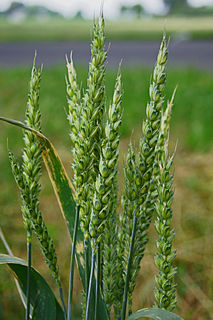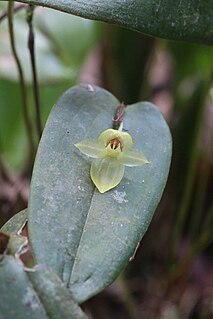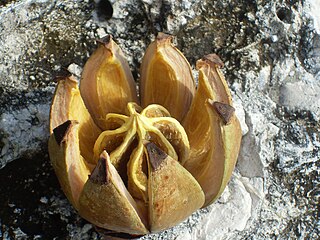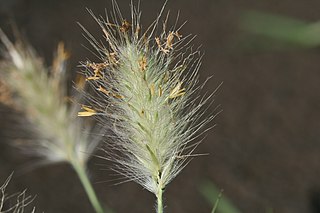
Asparagales is an order of plants in modern classification systems such as the Angiosperm Phylogeny Group (APG) and the Angiosperm Phylogeny Web. The order takes its name from the type family Asparagaceae and is placed in the monocots amongst the lilioid monocots. The order has only recently been recognized in classification systems. It was first put forward by Huber in 1977 and later taken up in the Dahlgren system of 1985 and then the APG in 1998, 2003 and 2009. Before this, many of its families were assigned to the old order Liliales, a very large order containing almost all monocots with colorful tepals and lacking starch in their endosperm. DNA sequence analysis indicated that many of the taxa previously included in Liliales should actually be redistributed over three orders, Liliales, Asparagales, and Dioscoreales. The boundaries of the Asparagales and of its families have undergone a series of changes in recent years; future research may lead to further changes and ultimately greater stability. In the APG circumscription, Asparagales is the largest order of monocots with 14 families, 1,122 genera, and about 36,000 species.

In computer text processing, a markup language is a system for annotating a document in a way that is syntactically distinguishable from the text, meaning when the document is processed for display, the markup language is not shown, and is only used to format the text. The idea and terminology evolved from the "marking up" of paper manuscripts, which is traditionally written with a red pen or blue pencil on authors' manuscripts. Such "markup" typically includes both content corrections, and also typographic instructions, such as to make a heading larger or boldface.

The Orchidaceae are a diverse and widespread family of flowering plants, with blooms that are often colourful and fragrant, commonly known as the orchid family.

The Poales are a large order of flowering plants in the monocotyledons, and includes families of plants such as the grasses, bromeliads, and sedges. Sixteen plant families are currently recognized by botanists to be part of Poales.

Orchidales is a botanical name of an order of flowering plants. In taxonomical systems, this is a relatively recent name as early systems used descriptive botanical names for the order containing the orchids. The Bentham & Hooker and the Engler systems had the orchids in order Microspermae while the Wettstein system treats them as order Gynandrae. Circumscription of the order will vary with the taxonomic system being used. Although mostly the order will consist of the orchids only, sometimes other families are added:

Pleurothallis is a genus of orchids commonly called bonnet orchids. The genus name is derived from the Greek word pleurothallos, meaning "riblike branches". This refers to the rib-like stems of many species. The genus is often abbreviated as "Pths" in horticultural trade.
Kunrei-shiki romanization is the Cabinet-ordered romanization system for transcribing the Japanese language into the Latin alphabet. Its name is rendered Kunreisiki rômazi in the system itself. Kunrei-shiki is sometimes known as the Monbushō system in English because it is taught in the Monbushō-approved elementary school curriculum. The ISO has standardized Kunrei-shiki, under ISO 3602.
The Cronquist system is a taxonomic classification system of flowering plants. It was developed by Arthur Cronquist in a series of monographs and texts, including The Evolution and Classification of Flowering Plants and An Integrated System of Classification of Flowering Plants (1981).

A color term is a word or phrase that refers to a specific color. The color term may refer to human perception of that color which is usually defined according to the Munsell color system, or to an underlying physical property. There are also numerical systems of color specification, referred to as color spaces.

Tubiflorae is a botanical name, meaning “with tubular flowers”. It was used in the Engler system for:
In plant taxonomy, Principes is a botanical name, meaning "the first". It was used in the Engler system for an order in the Monocotyledones and later in the Kubitzki system. This order included one family only, the Palmae. As the rules for botanical nomenclature provide for the use of such descriptive botanical names above the rank of family it is quite allowed to use this name even today, but in practice most systems prefer the name Arecales.

Guttiferales is a descriptive botanical name. It was used in the Bentham & Hooker system, the Wettstein system and Bessey system for an order of flowering plants that included the family Guttiferae. The latter is also a descriptive botanical name and refers to the latex present in these plants.

Gynandrae is a botanical name of an order of flowering plants. It was used in the Wettstein system for the order containing the orchids and is a descriptive name referring to the stamens. The Bentham & Hooker and the Engler systems also used a descriptive name for this order, but preferred the name Microspermae.

Glumiflorae is a descriptive botanical name. It was used in the Wettstein system for an order of flowering plants. The order consisted of one family only:
Glumaceae is a descriptive botanical name. It was used in the Bentham & Hooker system for the order including the grass family:

Joseph Decaisne was a French botanist and agronomist.

AC0 is a complexity class used in circuit complexity. It is the smallest class in the AC hierarchy, and consists of all families of circuits of depth O(1) and polynomial size, with unlimited-fanin AND gates and OR gates. (We allow NOT gates only at the inputs). It thus contains NC0, which has only bounded-fanin AND and OR gates.

In biological classification, taxonomic rank is the relative level of a group of organisms in a taxonomic hierarchy. Examples of taxonomic ranks are species, genus, family, order, class, phylum, kingdom, domain, etc.
Alex Drum Hawkes (1927–1977) was an American botanist and cookbook author that lived in Coconut Grove, Florida & Kingston, Jamaica. Alex specialized in orchids, bromeliads, palm trees, fruits, vegetables, and nuts. Named the orchid genera Flickingeria, and Paraphalaenopsis and travelled the world extensively, particularly the Caribbean & Latin America during the 1940s - 1970s collecting plants and authentic regional recipes.
Mark Alwin Clements (b. 1949) is an Australian botanist and orchidologist. He obtained his doctorate at the Australian National University defending his thesis entitled Reproductive Biology in relation to phylogeny of the Orchidaceae, especially the tribe Diurideae.













